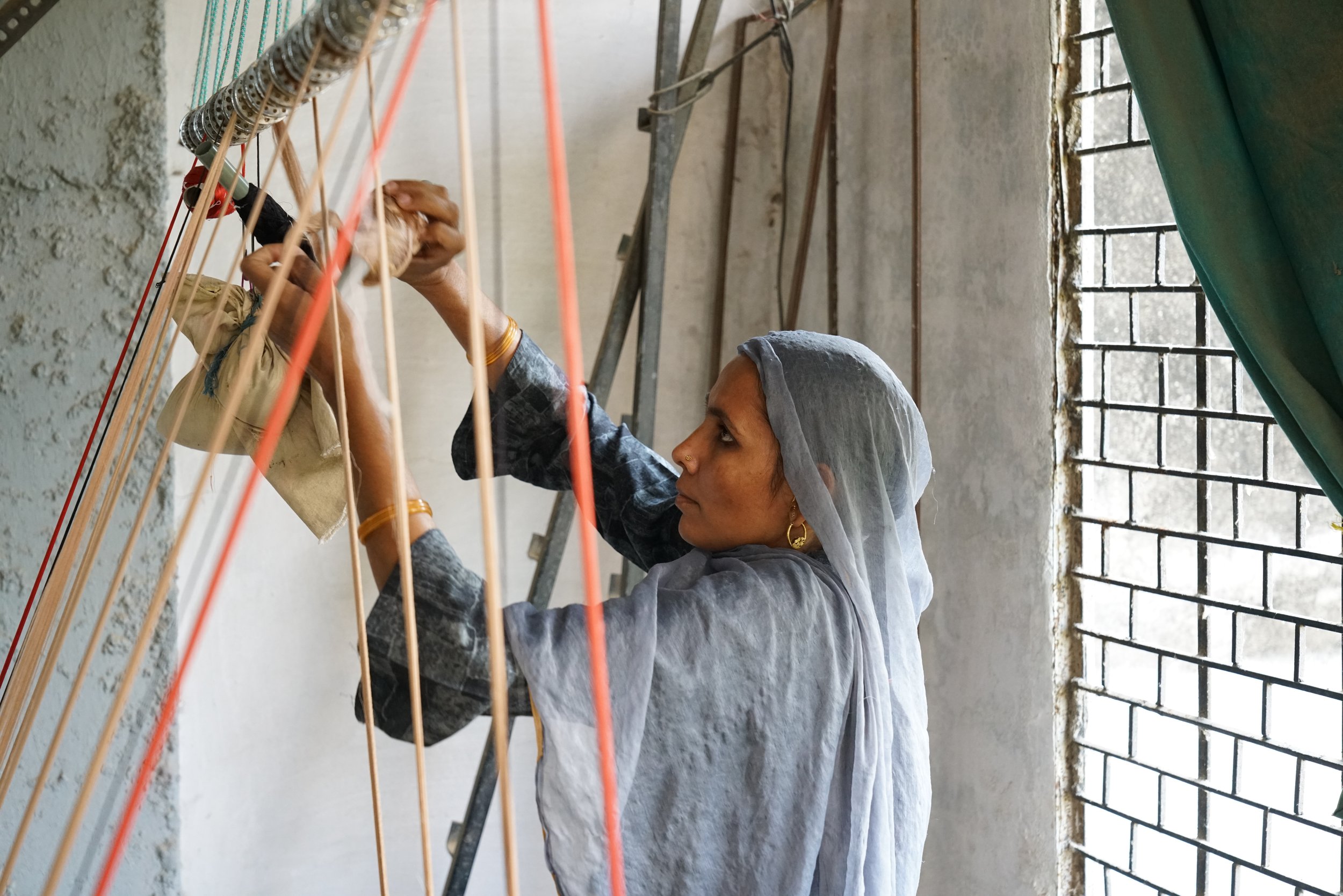
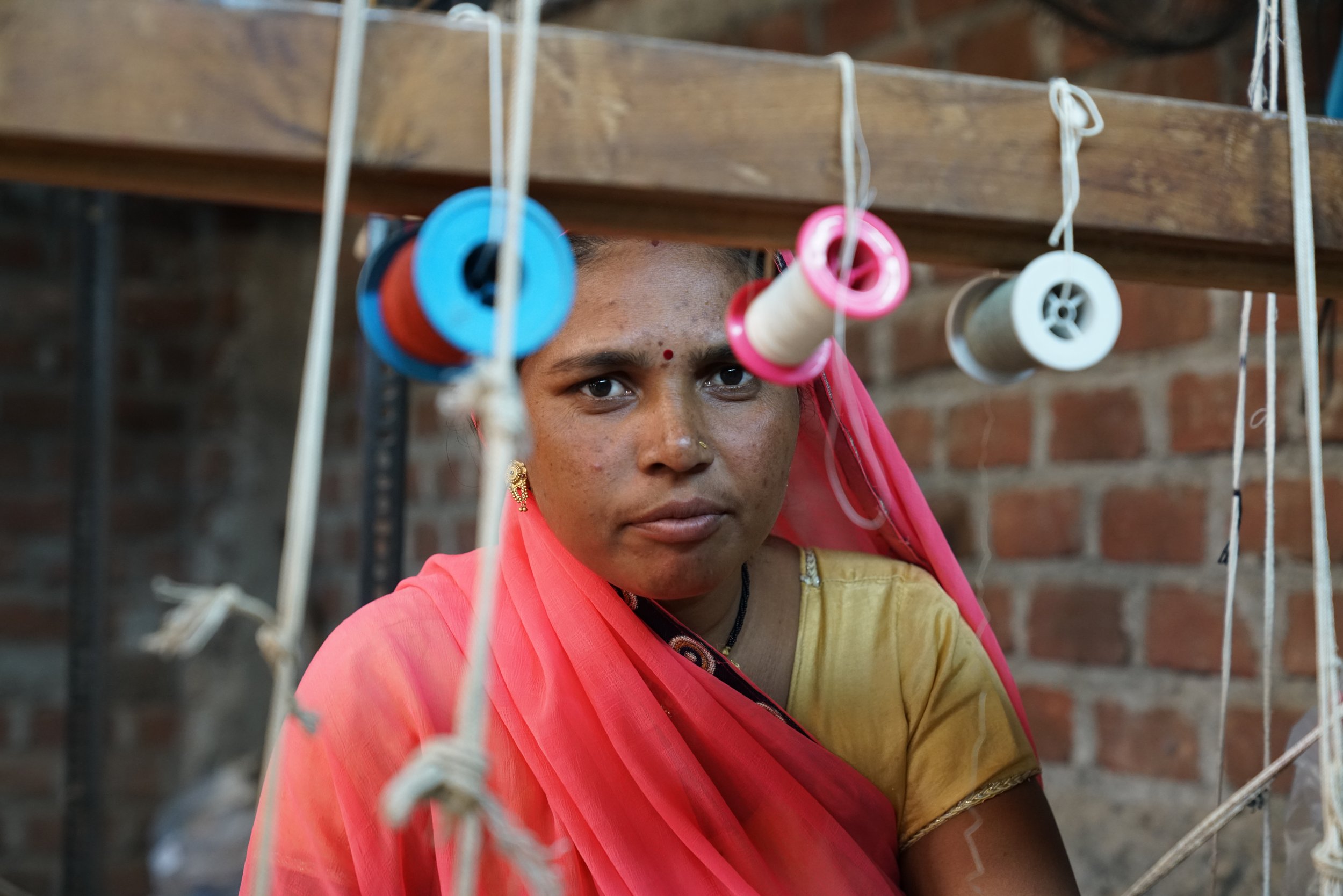
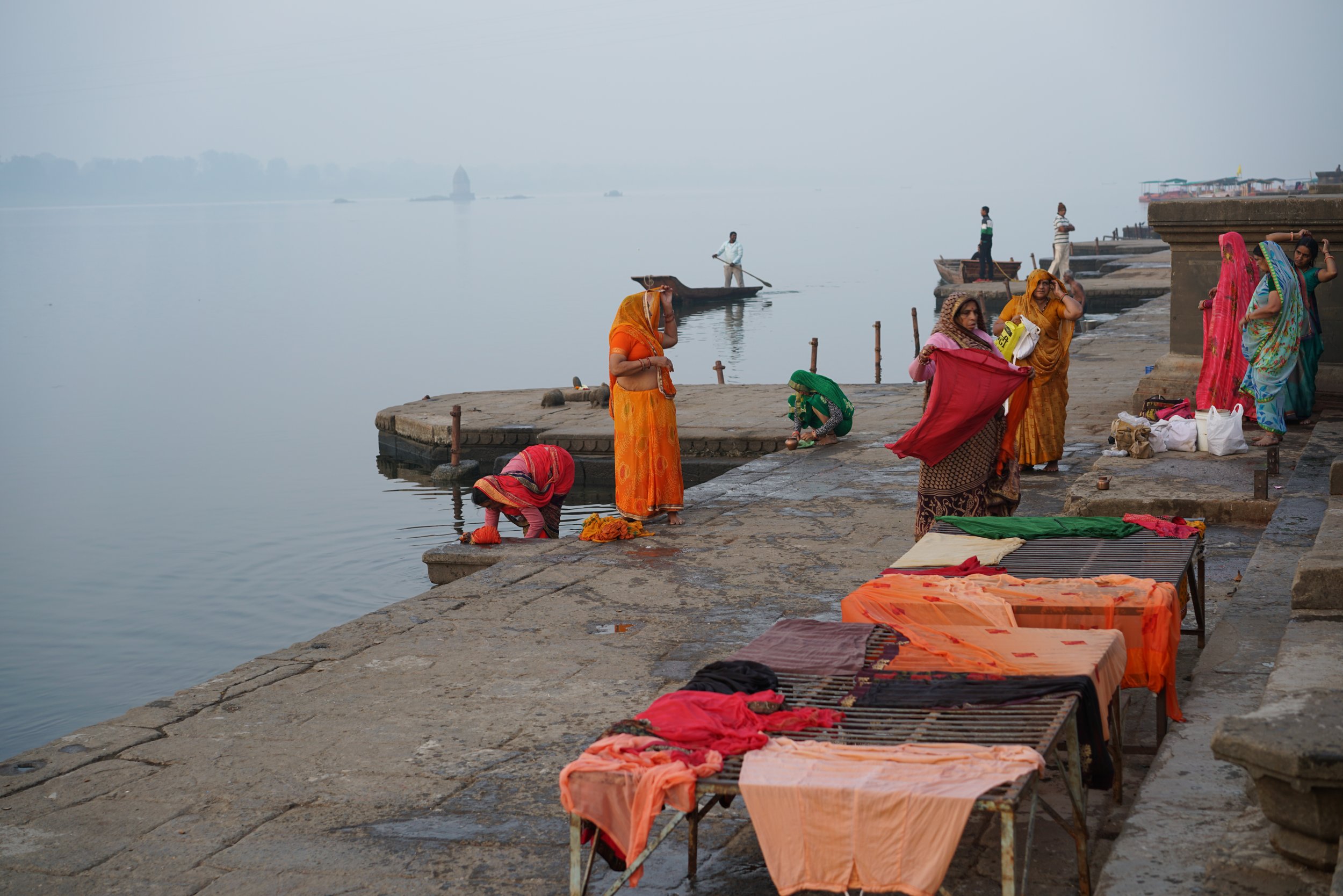
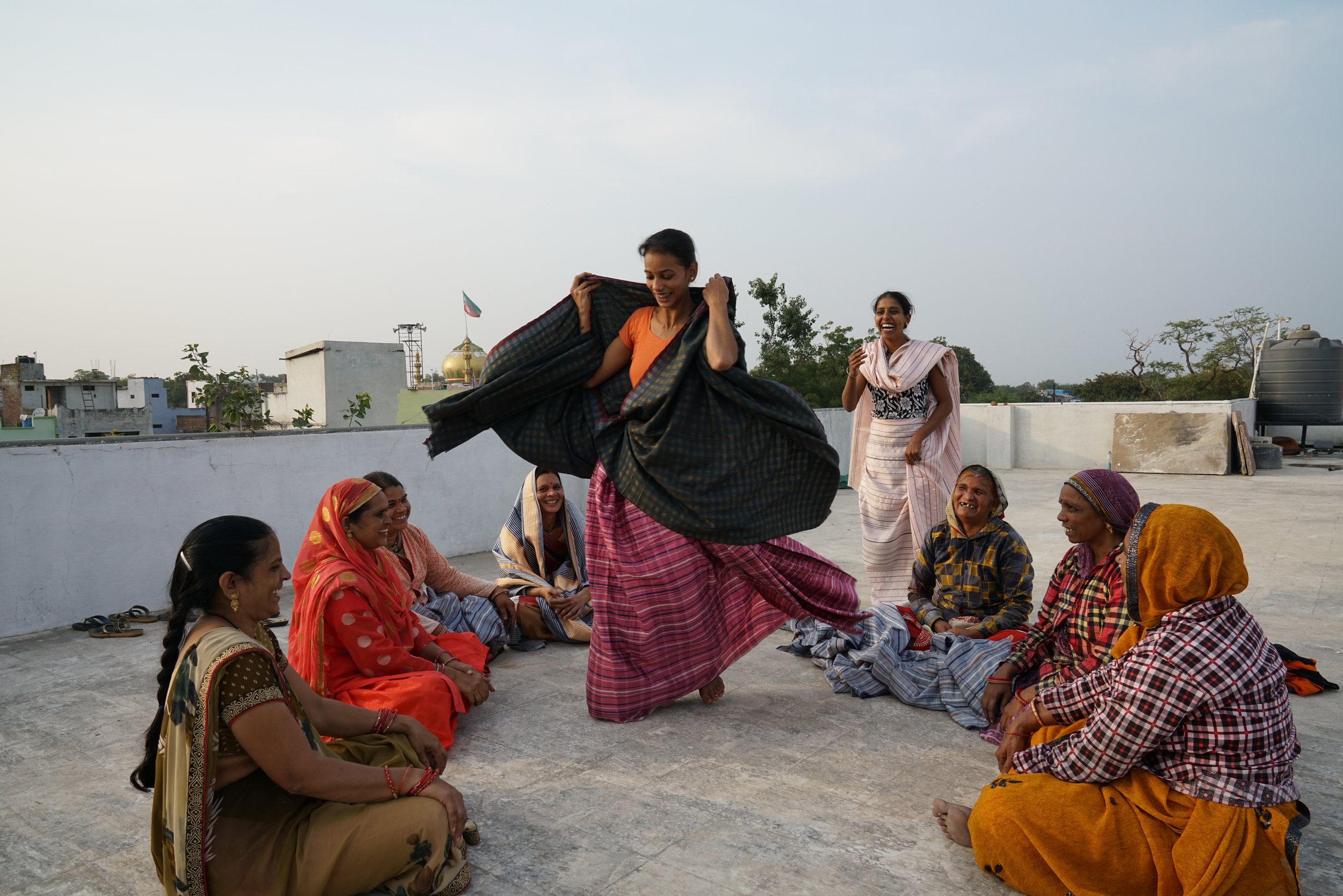

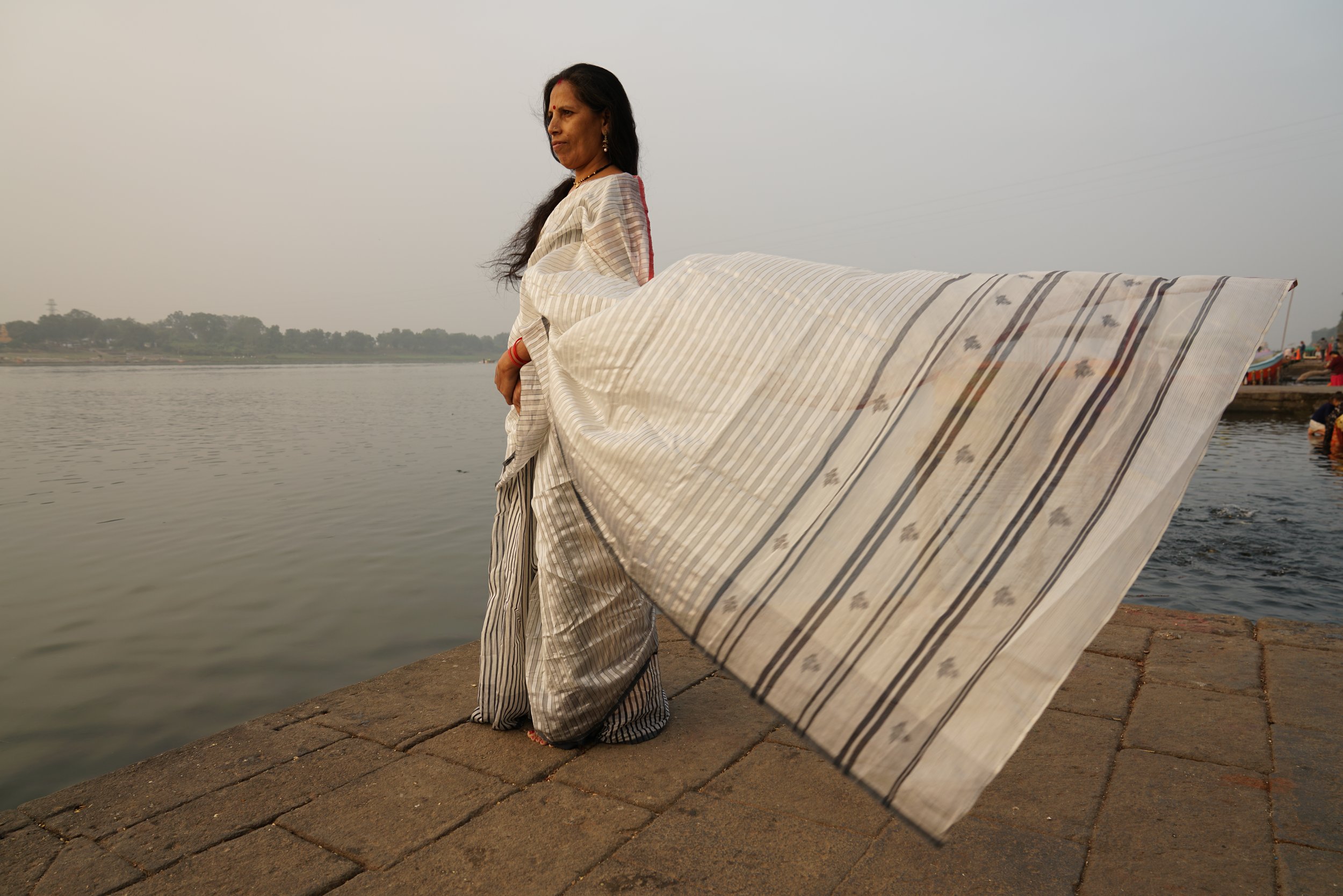
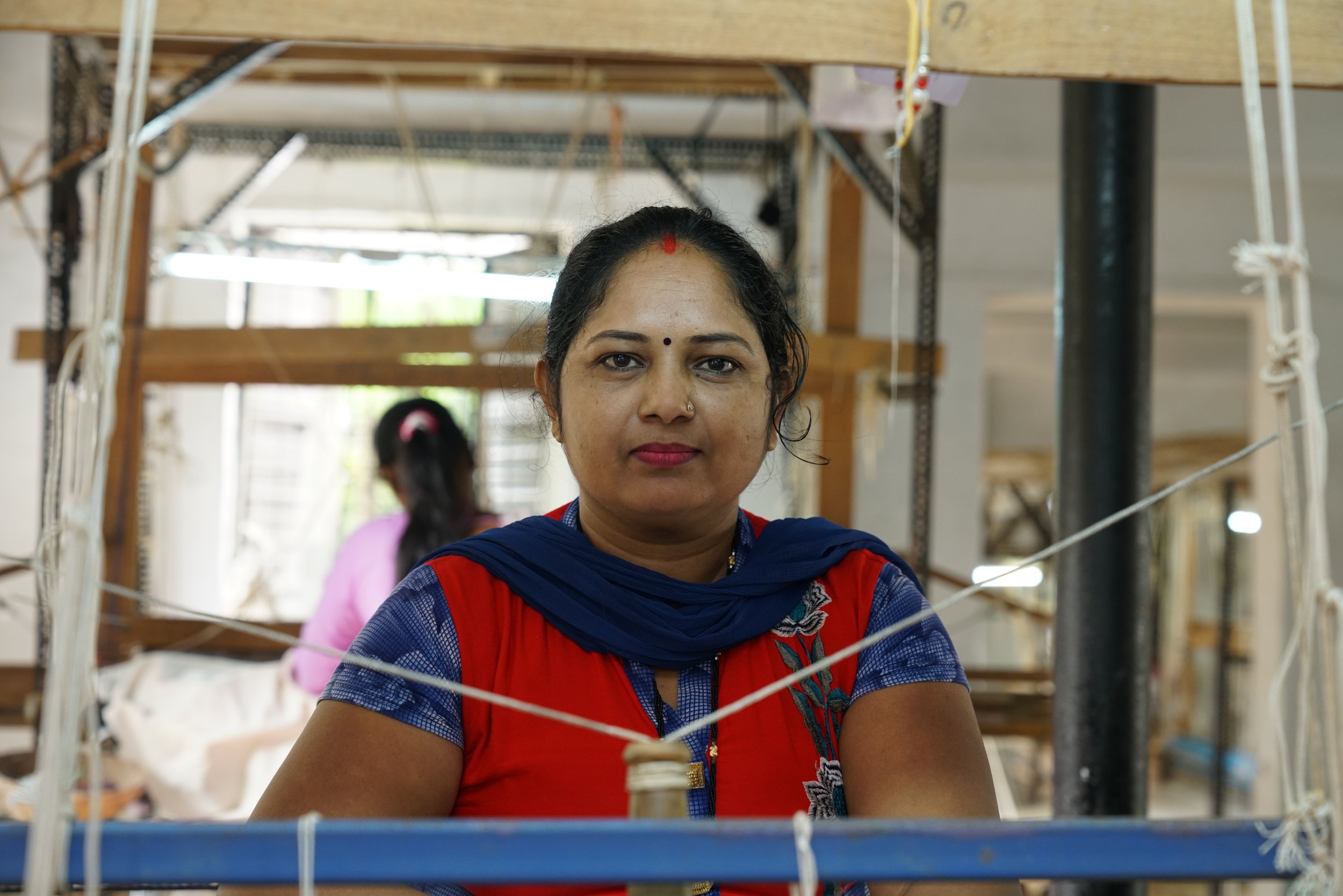
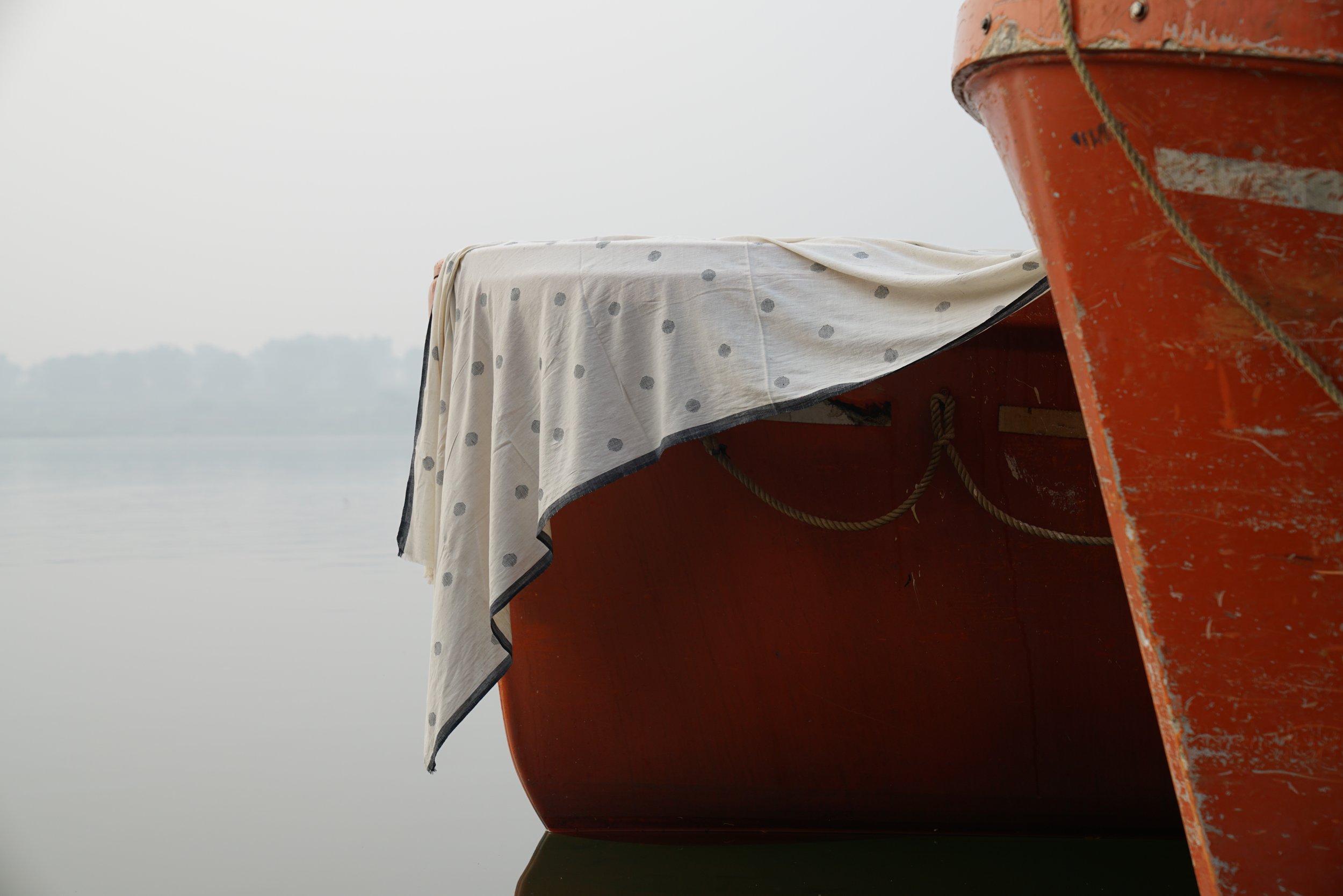
WORDS & IMAGES BY TAD PHILIPP
EDITED BY NEHAA BIMAL
Maheshwari handlooms and Maheshwari silk are a part of the “living legacy” of Maharani Ahilyabai Holkar or Ma Saab, the queen of Indore in the late 18th century who developed her capital city, Maheshwar, a town in Madhya Pradesh, India, into a literary, musical, artistic and industrial centre. The Maharani established a textile industry in the 1700s by inviting communities of weavers from the Indian states of Hyderabad and Surat to Maheshwar to teach her the art of weaving and prepare garments for the royal court.
Weaving and spinning continue to be a part of Maheshwar’s cultural tapestry and a skill for empowering women through the efforts of WomenWeave founder, Sally Holkar, formerly the royal daughter-in-law of Maharaja Yeshwant Rao Holkar II. Founded in 2003, the organization’s goal is to provide sustainable work for marginalized local women, many of whom are the sole breadwinner of their family.
“Our team is one hundred percent dedicated... to continue to build a bright future for our weavers by unlocking handloom’s potential in both local as well as global markets”
A woman in the midst of the weaving process.
WomenWeave’s fair wages, together with safe and hygienic working conditions, provide both monetary and psychological support systems. The organization provides a safe space for the weavers and support staff to feel comfortable and to be themselves, something they may otherwise lack in their city.
“Our team is one hundred percent dedicated to support slow and sustainable growth; to create a sensitive awareness of the handloom’s potential; and to continue to build a bright future for our weavers by unlocking handloom’s potential in both local as well as global markets,” said Holkar in her foreword on the WomenWeave’s website.
Photo of WomenWeave’s handloom school, which is a few miles from the headquarters. It has 16 students, several instructors, and support staff available at the location.
“It was easier than agriculture. It was cooler working inside. I might have died by now, or soon, if I were still working in the fields.”
Narmdi Choubi, a weaver, started working with WomenWeave about 9 years ago and had been an agricultural labourer prior to that for 10 years. She says that weaving provides regular income 12 months a year while her agriculture work had seasonal employment for 7 to 8 months of the year, with little to no paid work the rest of the year. Experienced weavers at WomenWeave make 8,000 to 13,000 rupees per month (about 115-185 USD per month) which goes a long way in Maheshwar. Many of the weavers are single mothers who were previously unemployed or in jobs with harder work and lower pay, such as being a maid or a labourer.
Narmdi lives with six members of her family: her husband, his parents, a daughter and two sons. She says her earnings are pooled with those from other family members and make an important contribution to covering their expenses and to maintaining harmonious relationships.
Women in Maheshwar going about their daily lives.
Samina, who is featured as a case study on the WomenWeave website, is a spinner and weaver who has been with the organization since 2005. Formally an agricultural labourer, Samina spins the semi-automatic, hand-powered chakras or spinning wheels. These looms are a far cry from the traditional wooden chakra used by Mahatma Gandhi during India’s independence movement to make handspun fabric (khadi), but both are synonymous with self-reliance and perseverance.
One of the weavers, modelling some of the handmade textiles the women have made.
“It was easier than agriculture. It was cooler working inside. I might have died by now, or soon, if I were still working in the fields,” says Samina.
“Since I have been working here, I am very satisfied. When I came to work, I was in a mud house. Now I am in a pucca (permanent and solid) house. The earnings go up, but I spend more and more. My daughters buy too many clothes!”, she says.
WomenWeave is engaged in all the steps necessary to turn raw fibre into cloth, including the processes of spinning, dyeing, and weaving. WomenWeave has about 160 employees at the Gudi Mudi project, which aims to empower the most vulnerable women in the area, such as those who are divorced, widowed, separated, handicapped and agricultural labourers with no family income.
All the fabric at WomenWeave is handmade and is touched by about 16 different people during the process. Back in the days of Maharani Ahilyabai, fabric designs were inspired primarily by the Ahilya Fort. Today, WomenWeave draws from a design bank of 700-800 fabrics that were inspired by local weaving tradition, but that have been updated with modern colour combinations and patterns in mind. The organization also has a low carbon footprint, with no electronic devices used at any step of the production process.
Additionally, they operate a handloom school not far from its main office. This residential program runs about six months and is intended to cultivate the next generation of designers and weavers, targeting young men and women who belong to traditional weaving communities and families from rural/semi-urban parts of India. It also teaches business skills to encourage weaving entrepreneurs, such as a Certificate in Design, Entrepreneurship and Management.
“WomenWeave is working hard to raise demand from wholesalers by increasing consumer awareness, not just of the beauty of their fabrics but in how its production creates jobs for women in an environmentally sustainable way. ”
A woman engaged in the weaving process.
WomenWeave is working hard to raise demand from wholesalers by increasing consumer awareness, not just of the beauty of their fabrics but in how its production creates jobs for women in an environmentally sustainable way. About half of their products are sold in India and about half internationally, often to customers who value sustainable weaving.
The organization has an important place in the farm-to-fabric movement. The cotton they use is grown locally, their wool comes from the colder climates of northern India, and their silk is sourced from another NGO in India. With these raw materials, WomenWeave takes the fabric creation process the rest of the way.
Learn more about WomenWeave and their programs by visiting their website or social media.










